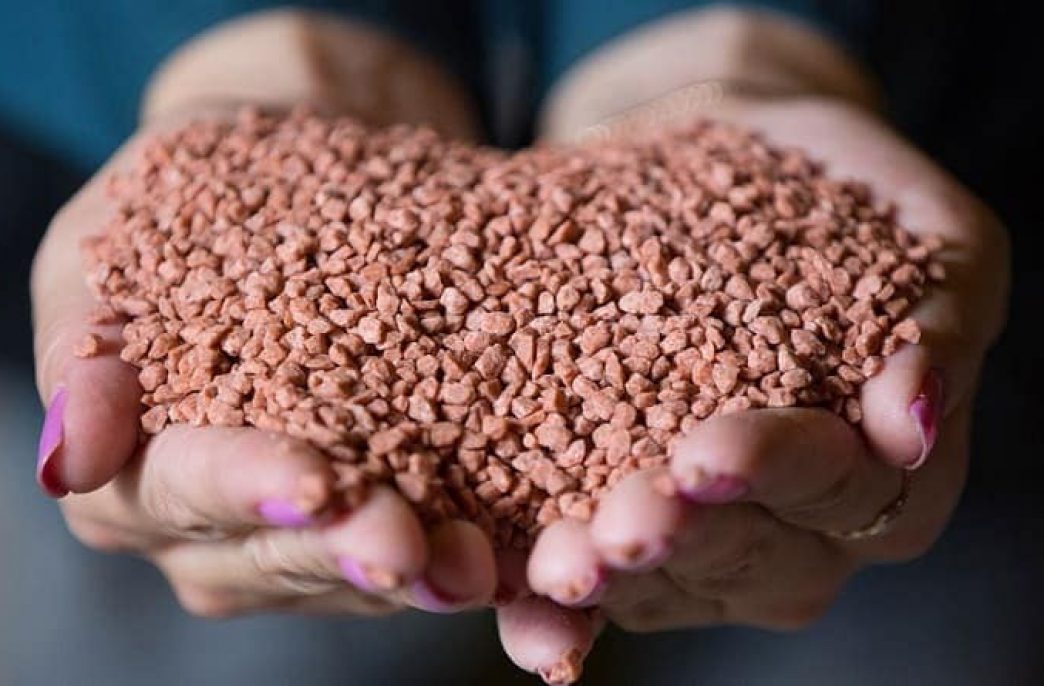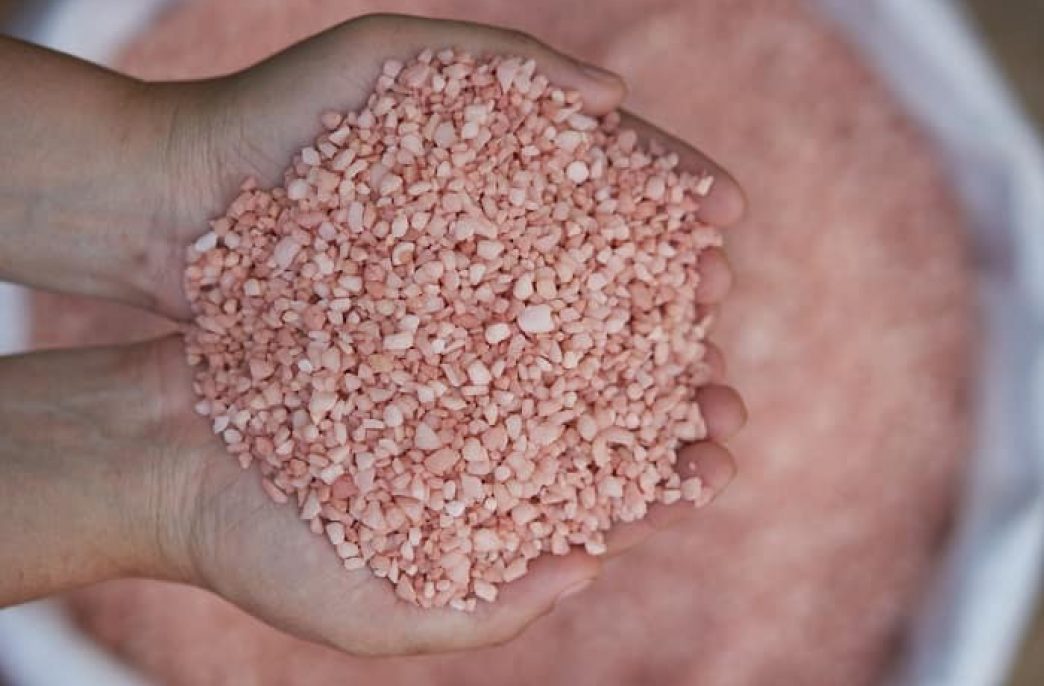Modern phosphorus-potassium fertilizers, their types and methods of application

Potassium fertilizers with mineral phosphorus play a leading role in plant growth and fruiting. Used for planting drugs (nitrogen), during the formation of bouquets and fruits (phosphorus, potassium). You can use mono-drugs and complex formulas that contain several necessary components at once.
Phosphorus-potassium fertilizer in commercial flower gardens produces lush green and beautiful buds. The same goes for farms that grow thuja, edible and other evergreen plants. With the emergence of culture you can feel the lack of phosphorus and potassium – growth slows down, flowering occurs later, the fruits do not ripen, stems and leaves have an unusual shade.
The best producers of phosphate-potassium fertilizers in Russia:
PhosAgro is the world’s top-ranked phosphorus producer, the world’s second-largest producer of diamond phosphate and ammophos, the only supplier of monocalcium phosphate in Russia, and a leading supplier in Europe;
Uralkali is a world leader in potassium production. The company is developing the Verkhnekamskoye field;
EuroChem produces nitrogen, phosphorus and potassium fertilizers.
Application properties depending on the composition

The phosphorus group includes: superphosphate (simple and double), phosphorite and bone meal, thermophosphate, slag and sediment. The drugs are used as a basic or additional fertilizer.
Superphosphate is present in granules and gray powder. It contains up to 20% phosphoric acid, so it should not be used in acidic soils. The granules dissolve longer in the soil, so a powder is used for faster assimilation. Due to its roasting ability, the powder is not used on shrubs and trees. Phosphoric acid accumulates in the application area and hardly moves in the soil, so it is recommended to make the fertilizer deeper, closer to the roots.
Double superphosphate contains up to 50% phosphoric acid. Not suitable for slightly acidic and acidic soils, not recommended for fertilizing fruit trees. It is introduced in the fall, after harvest. Farmers are advised to add the concentrate by mixing it with a little humus. Phosphate rock is used in the fall as a basic fertilizer. It is enough to make a deposit once in 2-3 years.
The dose of listed fertilizers is 1 sq. M. m respectively as staple food and top dressing:
superphosphate – 30-45 and 15-20 g;
double superphosphate – 14-19 and 9 g;
phosphate rock – 80 and 40 g.
Selection of the product taking into account the characteristics of the soil

The potassium group includes the following drugs: potassium sulfate and chloride, potassium chloride, potassium salt, potassium, sylvinite, potassium-magnesium sulfate and kainite. Fertilizers dissolve well and are suitable for any soil. They are used with caution for crops that do not like chlorine. Potassium sulfate is more suitable for them because it does not contain hazardous substances.
Doses for 1 square m, respectively, as the main food and top dressing:
potassium and magnesium – 30 and 15 g;
potassium chloride – 40 and 5 g;
potassium sulfate – 25 and 7 g;
potassium salt – 40 and 10 g;
potassium chloride – 40 and 10 g.
Fertilizers are applied in spring and autumn in the form of solutions or dry formulas.
Complex processing of the site
The composition of the complex includes nitrogen-potassium and nitrogen-potassium-phosphorus fertilizers. It can be nitrofoska, potassium nitrate, ash, nitroammophoska and others. Compositions are three to two times the number of main components.
One of the most popular types – diammophos is available in powder and granule form. It contains little nitrogen and enough phosphorus. Not recommended for slightly acidic and acidic soils. It is applied in the form of a solution and dry at a dose of up to 30 g per 1 sq. M. m in the spring it is used as a basic clothing, in the fall as a supplement.
Another popular fertilizer is potassium nitrate. The concentrate is used with caution in doses of up to 18 g per 1 square. m.
Ordinary wood ash contains all the necessary minerals and is used when it is necessary to fertilize with phosphorus-potassium fertilizers. Given the low concentration, you will need 200-500 g of powder for 1 square. m fitna.
Attitudes of different crops to feeding

Complex phosphorus-potassium fertilizer has a beneficial effect on plant development and increases productivity. Phosphorus increases the resistance of plantations to cold and disease, while potassium accelerates flowering and fruit formation. Each culture has a different need for a particular diet, so there is no universal dose.
Under conditions of phosphorus deficiency, tomatoes are deformed, stained and lose their sweetness. The formation of the green mass of the bush depends on potassium. Plants in the open field and greenhouse are suitable for spraying with wood ash and potassium monophosphate.
Cucumbers are fed 4–5 times a season. Phosphorus deficiency is manifested by the fall of thin and lifeless buds, potassium – ovaries and bluish foliage. The use of potassium monophosphate will bring the plant back to life quickly, and if you apply the potassium-phosphorus fertilizer again after 2 weeks, you can correct the result. It is permissible to add yeast and wood ash to the mixture.
Liquid phosphorus-potassium fertilizers for flowers are necessary for all plants, both in the soil and at home. However, the following rules must be followed:
feeding young plants by halving the recommended dose;
watering the plant before fertilization;
follow the method of feeding indicated in the instructions;
Prepare a fresh solution each time for spraying.
The rate of application of phosphorus-potassium fertilizers for garlic, grapes, strawberries, roses and orchids, lawns and apple trees depends on soil composition, crop appearance and season. The main stages of soil cultivation coincide with the growing season – from early spring to late autumn. The first procedures give the plants the strength to grow and bear fruit, while the second helps boost immunity and help them survive the winter cold.
The best potassium-phosphorus fertilizers are not declared in the rating, but are fertilizers that are optimally suited to a particular soil, taking into account the soil and crops grown.




